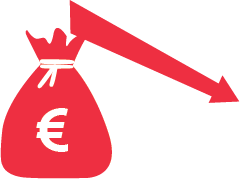Ship Anchor and Ship Anchoring Methods
There are many ways to anchor ships. Duration and location depend on a number of variables and external factors. For example, wind direction and strength, current and tidal current. Consider the most common mounting methods
Anchorage is one of the most frequent operations on board ships. The duration and location of anchoring is influenced by a number of variables and external factors. Although the type of seabed is of paramount importance for anchoring, a soft muddy bottom or muddy bottom is preferred. Care should be taken to ensure that there are no power lines, submarine cables, pipelines or rocks at the bottom of the anchorage. Various anchorage methods include wind direction and strength, current and tidal current. Often a good knowledge of local conditions helps the seafarer to determine the necessary maneuvers and actions to be taken when anchored.
The most common anchoring methods are:

This method is used on a wide variety of vessels including small craft and pleasure yachts as well as larger vessels up to 100,000 GT. The principle used in this method is for the anchor to slide with the cable under its own weight from the hawse tube. Line weight, windlass holding force and boat inertia are factors that must be controlled by the boat to ensure that the anchor is buried and the line is subsequently stowed to pull back. When approaching the place of anchoring, the speed of the vessel relative to the ground is reduced to zero with the help of the engines and the rudder, and at the same point the anchor together with the cable can jump out under its own weight.
As soon as the legs touch the bottom or the chain touches the ground, the motors are moved backward or forward, depending on the prevailing wind and current conditions, to obtain backward momentum with respect to the ground, which will stretch the cable. This can be paid for by the controlled application of the brakes so that the cable length does not run out completely. Often, under such conditions, the combined effect of wind and current of the vessel also tends to wobble and fall astern.
Pay attention to the preferred turning direction and which side to use the anchor. Care should also be taken to ensure that the entire cable is not damaged and does not allow cable accumulation, which can lead to kinks or kinks in the cable. When approaching the anchorage, the captains of the ships usually lower the anchor to the water level so that when the brakes are released, the cables can be freely extended. Sometimes, after a long sea voyage, the anchor could get stuck in the hauz pipe and not jump off it under its own weight. As a preemptive and good maritime practice, always check the condition of the winch brake pad prior to use.
On a few occasions, often on older ships, repeated use of the brake pads was found to be completely worn out or less than the required thickness, resulting in a significant reduction in braking power, resulting in the cable completely failing under its own weight, resulting in the loss of anchor and cable both.
Uneven loads or excessive aft impulse after applying the brakes can damage the windlass, its foot and the base. Engines should be used to counteract excessive ship inertia, and when using engines, the condition of the ship, loaded or in ballast, should always be kept in mind. Prolonged tremors can develop enough momentum in a busy vessel to tighten the anchor or even break the line. It has been found that a loaded vessel is more sensitive to the effects of currents or tides, while a vessel in ballast drifts largely due to the wind. The combined effects and direction of local conditions can be helpful in preparing for anchoring.
As soon as the legs touch the bottom or the chain touches the ground, the motors are moved backward or forward, depending on the prevailing wind and current conditions, to obtain backward momentum with respect to the ground, which will stretch the cable. This can be paid for by the controlled application of the brakes so that the cable length does not run out completely. Often, under such conditions, the combined effect of wind and current of the vessel also tends to wobble and fall astern.
Pay attention to the preferred turning direction and which side to use the anchor. Care should also be taken to ensure that the entire cable is not damaged and does not allow cable accumulation, which can lead to kinks or kinks in the cable. When approaching the anchorage, the captains of the ships usually lower the anchor to the water level so that when the brakes are released, the cables can be freely extended. Sometimes, after a long sea voyage, the anchor could get stuck in the hauz pipe and not jump off it under its own weight. As a preemptive and good maritime practice, always check the condition of the winch brake pad prior to use.
On a few occasions, often on older ships, repeated use of the brake pads was found to be completely worn out or less than the required thickness, resulting in a significant reduction in braking power, resulting in the cable completely failing under its own weight, resulting in the loss of anchor and cable both.
Uneven loads or excessive aft impulse after applying the brakes can damage the windlass, its foot and the base. Engines should be used to counteract excessive ship inertia, and when using engines, the condition of the ship, loaded or in ballast, should always be kept in mind. Prolonged tremors can develop enough momentum in a busy vessel to tighten the anchor or even break the line. It has been found that a loaded vessel is more sensitive to the effects of currents or tides, while a vessel in ballast drifts largely due to the wind. The combined effects and direction of local conditions can be helpful in preparing for anchoring.
1. Let Go
Most companies have their own rules for anchoring large ships such as VLCC'S or ULCC'S, which must be followed without fail. The reverse anchorage method is recommended and is used primarily on vessels over 1,00,000 GT. The principle of operation is the same, but the cable is spread by a winch at a fixed speed. When approaching the anchorage, the speed of the vessel on the ground gradually decreases to zero, and the anchor is lowered into the water.
As it touches the bottom, a greater length is paid for, and the engines are shifted aft to develop a little movement aft to lay the cable well when the anchor legs dig into the seabed. This method usually takes longer than the vacation method; however, it allows captains to better control the amount of cable paid and the weight of the windlass. It is important that the captain of the vessel has correctly assessed tidal conditions, gusty winds or strong coastal currents in advance in order to take into account the movement of the vessel when laying the line. Typically the design speed of the winch is about 30-35 ft / min, which is about 0.3 knots above the ground.
Also, the windlass is designed to lift up to 3-4 shackles along with the weight of the anchor. The flyback method prevents cable build-up or kinking, which is paid for while energized, and thus provides better control for the captain or pilot to ensure that the anchor is held and not dragged. However, the boat's ground speed must be carefully controlled to avoid undue stress on the windlass that is being used while in gear.
As it touches the bottom, a greater length is paid for, and the engines are shifted aft to develop a little movement aft to lay the cable well when the anchor legs dig into the seabed. This method usually takes longer than the vacation method; however, it allows captains to better control the amount of cable paid and the weight of the windlass. It is important that the captain of the vessel has correctly assessed tidal conditions, gusty winds or strong coastal currents in advance in order to take into account the movement of the vessel when laying the line. Typically the design speed of the winch is about 30-35 ft / min, which is about 0.3 knots above the ground.
Also, the windlass is designed to lift up to 3-4 shackles along with the weight of the anchor. The flyback method prevents cable build-up or kinking, which is paid for while energized, and thus provides better control for the captain or pilot to ensure that the anchor is held and not dragged. However, the boat's ground speed must be carefully controlled to avoid undue stress on the windlass that is being used while in gear.
2. Walk back
Ship anchors can be used not only for mooring, but also when maneuvering along canals and other similar areas with traffic restrictions. Dredging anchors are a technique used to assist a vessel in maneuvering during the absence or inability of tugs to provide assistance as needed.
The dredging anchor sniffing the bottom of the ship will hold the bow, allowing the ship to move forward and backward, this moves the ship's pivot point forward. Then, to overcome the resistance of the armature, a propulsion system is used to provide good steering at low speed.
Today's ships have bow thrusters to steer the bow when moving forward or backward. When piloting in tight confines, in confined waters, or when maneuvering vessels in somewhat confined spaces, bow thrusters or tugs can be helpful.
Sometimes ships have to first cross aft (i.e. move backward) through a limited channel between ships or buoys using thrusters and bow thrusters. Now, since the stern tilts (moves sideways) while the boat is stern due to lateral thrust, in this case a tug is used at the stern and the engine is used sparingly only to correct any deviation in the desired direction of travel.
A control tug is also located in the bow of the vessel, which monitors it and prevents deviations from the course. The control tug also helps to stop the ship's inertia so that its engine does not fire in time.
What happens when there is no bow thruster or bow check tug? A towing tug is necessary as the vessel will invariably deflect with every second the engine is operated astern due to lateral thrust. In such an emergency, the anchor becomes the lifeguard.
The anchor is lowered for a short time when the cable is lowered almost vertically down to the anchor and is taught. The anchor is hardly buried when the ship is put at the stern and the anchor is dragged along the seabed. The axle is offset to the bow next to the waterway, which makes it easier for the towing tug aft to apply more torque as the distance from the axle increases. Bow yawing is also prevented.
The purpose of this operation is to drag the anchor through soft silt (such as the head of a suction dredger) rather than bury the anchor deep in the silt. Otherwise, the cable will be heavily loaded and may break when the engine is in reverse or the towing tug is towing it. Mechanisms that use an anchor on the tank, such as windlass, nose piece or brakes, can also be damaged.
Ideally, the cable length should not be one and a half to two times the depth of the water. Moreover, it is usually advisable to have a good understanding of the sea or river bed before performing this operation. Recent survey maps can be extremely useful in this case.
The dredging anchor sniffing the bottom of the ship will hold the bow, allowing the ship to move forward and backward, this moves the ship's pivot point forward. Then, to overcome the resistance of the armature, a propulsion system is used to provide good steering at low speed.
Today's ships have bow thrusters to steer the bow when moving forward or backward. When piloting in tight confines, in confined waters, or when maneuvering vessels in somewhat confined spaces, bow thrusters or tugs can be helpful.
Sometimes ships have to first cross aft (i.e. move backward) through a limited channel between ships or buoys using thrusters and bow thrusters. Now, since the stern tilts (moves sideways) while the boat is stern due to lateral thrust, in this case a tug is used at the stern and the engine is used sparingly only to correct any deviation in the desired direction of travel.
A control tug is also located in the bow of the vessel, which monitors it and prevents deviations from the course. The control tug also helps to stop the ship's inertia so that its engine does not fire in time.
What happens when there is no bow thruster or bow check tug? A towing tug is necessary as the vessel will invariably deflect with every second the engine is operated astern due to lateral thrust. In such an emergency, the anchor becomes the lifeguard.
The anchor is lowered for a short time when the cable is lowered almost vertically down to the anchor and is taught. The anchor is hardly buried when the ship is put at the stern and the anchor is dragged along the seabed. The axle is offset to the bow next to the waterway, which makes it easier for the towing tug aft to apply more torque as the distance from the axle increases. Bow yawing is also prevented.
The purpose of this operation is to drag the anchor through soft silt (such as the head of a suction dredger) rather than bury the anchor deep in the silt. Otherwise, the cable will be heavily loaded and may break when the engine is in reverse or the towing tug is towing it. Mechanisms that use an anchor on the tank, such as windlass, nose piece or brakes, can also be damaged.
Ideally, the cable length should not be one and a half to two times the depth of the water. Moreover, it is usually advisable to have a good understanding of the sea or river bed before performing this operation. Recent survey maps can be extremely useful in this case.
3. Dredging Anchor
Do you know any other way in which ship's anchors are used for maneuvering ships? Let us know in the comments below.

TOP 5 factors contributing to lower fuel costs for Shipping companies
Get a presentation with a full description of the features and free pilot project with trial of Marine Digital FOS for 2 months
"Clicking the button, you consent to the processing of personal data and agree to the privacy policy"

Get an overview "The Pathway to Zero Carbon Shipping:
IMO Compliance and CII Optimization through SEEMP" on email and download it for FREE! Leave your email now!
"Clicking the button, you consent to the processing of personal data and agree to the privacy policy, as well as consent to subscribe to the newsletter. "
Аdvantage of Fuel Optimization System from Marine Digital:

Marine Digital FOS can be integrated with other system and third-party's solutions through the API. To implement vessel performance monitoring for any vessel, we are using mathematical algorithms, machine learning and the same equipment as in FOS. The more data we collect from vessels, the more precise reports and recommendations our system will perform according to your individual requirements in fleet management.
If you have any questions about the solutions and the Marine Digital System platform, write to us, we will be happy to answer
If you have any questions about the solutions and the Marine Digital System platform, write to us, we will be happy to answer

Increased business process speed

Reducing to zero the number of errors

Best offer to the clients

Reduction in operating expenses
Have a questions?





